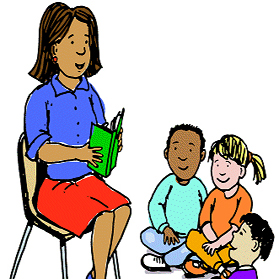
EdnaKrabappel
Chicago, IL
Female, 32
From ’03-‘06, I was a special education teacher in Philadelphia as part of Teach for America. I taught children with mild to moderate special needs (primarily learning disabilities, attention deficits, cognitive disabilities, and behavioral problems) in grades 2 - 8 in all academic subjects. I saw a lot of things and learned a lot...especially the art of patience.
It's difficult to guess why the student is more willing to complete work in the resource room - could it be because the resource room is quieter, calmer, or has fewer distractions? Perhaps the student feels the resource teacher is better able to support him/her to complete work then the general education teacher? Perhaps the child is avoiding the general education classroom because of problems with a peer? Without knowing what is motivating the change in the child's behavior, it's difficult to know how to address it. Some ideas to try in general are presenting rewards or incentives for work completed in the general education classroom, letting the student choose certain items of work to complete in the resource classroom and requiring the student to complete other work in the general education classroom, or using time completing work in the resource classroom as a reward for work completed in the general education classroom. You could use a token reward system where the student earns tickets, stickers, or other small items each time work is completed in the general education classroom and use them to cash in for a prize of your choosing. Then over time you make it harder and harder for the student to earn the prizes so more and more work is expected to be completed in the general education classroom. It would also be good to consult with a school psychologist or social worker to see if they can assist you in supporting this student to complete more work in the general education classroom.
This is a description of the The scores obtained from the key math assessment. M stands for mean, and a mean standard score of 100 is average on this assessment. SD stands for standard deviation, and a standard deviation of 15 points from the mean marks the top and bottom of the average range on this assessment. This means a child score that falls between 85 and 115 is within the average range on this assessment. A subtest scaled score has a mean of 10, so a score of 10 is exactly average on this assessment. Standard deviation for scaled scores is three on this assessment, which means that scores between seven and 13 on an individual subtest for the key math assessment are within the average range.
See responses below...
Typically, a resource setting refers to a special education classroom outside of a general education setting. Often it is a smaller group of students and only include students with some type of special need or IEP. Often there will be a special education resource teacher as well as a teacher assistant in a resource setting. A resource classroom is intended to provide small group individualized instruction for children whose needs cannot be met in a general education classroom. This may be due to academic or behavioral needs, and may include specially designed instruction such as explicit teaching repeated exposure to the general education concepts, or simply a slower pace of instruction and then is offered in the general education setting. The resource teacher may be responsible for meeting the IEP requirements for as many as 10 to 20 students with special needs, depending on state policies for teacher to student ratio in special education. The resource teacher is also responsible for coordinating IEP supports in a general education setting if a student spend some of their day and a general education classroom. So this means the resource teacher may be providing ideas or support to a general education teacher to help a student when they are in the general education classroom, or meeting with the related service personnel such as a speech pathologist, occupational therapist, or social worker to discuss a students therapeutic supports listed in the child's IEP.
Antiques Dealer
 What's the most profit you've ever made from a single item?
What's the most profit you've ever made from a single item?
Geek Squad Agent/Supervisor
 What's the biggest scene a customer's ever made in the store?
What's the biggest scene a customer's ever made in the store?
Employment Lawyer
 Can I be sued for asking a co-worker on a date?
Can I be sued for asking a co-worker on a date?
There is a lot of variation in what type and how many accommodations a general education teacher may implement in a classroom for a student with disabilities. It could be as simple as rephrasing or repeating directions, or as complex as modifying all classroom work for a student. Typically accommodations are created by the IEP team together in an IEP meeting and the teacher, special education teacher, social worker, psychologist, speech pathologist, occupational therapist, or physical therapist could all be involved in delivering accommodations, depending on what the specific accommodation is.
This is definitely not best practice for including students with disabilities with their general education peers, and it is potentially a violation of the student's rights to access and participation in non-academic general education activities. Special education teachers must often act as advocates for their students to help ensure that they have equal access to all non academic activities. If you are unable to get the time of assemblies changed by speaking with the building administration or school district administration, you should encourage parents and teachers to address the concern with the school district administration and school board. If the school still does not take action, you can file a claim with the office of civil rights to be sure that the schedule is changed to accommodate all students.
I had a 4 year Bachelor's degree in Psychology and a 2 year Master's in Special Education and Elementary Education prior to completing certification as a Special Education Teacher. Many teachers have a 4 year Bachelor's degree in Education or Special Education and no additional degrees are required. Most states have additional requirements for taking a specific assessment related to education or special education knowledge prior to receiving certification to teach.
As a special education professional my main role was to create instructional plans for the students in my class to achieve their IEP goals. I would use the general education curriculum and other resources to create lessons and assessments to determine if the students had mastered the skills included in their IEP goals. This also often included collaboration with the general education teachers to be sure that my instruction in the special education resource classroom was effective in meeting the student's academic needs.
There are many types of assessment used in special education classrooms. There are formative assessments used to find out what information a child already has or has not mastered in order to plan classroom instruction. These may include quizzes, chapter tests, or unit assessments. Summative assessments are given at the end of instruction to see if students have mastered material already covered and may include final examinations for a large unit or for an entire course. Standardized assessments may be used to measure the general knowledge and concept mastery for students in a specific grade level. These are the state or national examinations administered each year (in most grade levels) that help states and federal governments determine if school's are functioning adequately in providing public education to students. Finally, there are other standardized tests or rating scales that may be completed during an evaluation to determine eligibility for special education services. Some of these may be completed by a special education teacher but most are completed by other school special education personnel (social worker, school psychologist, speech pathologist, occupational therapist, or physical therapist).
Communication of assessment results should be done in writing as well as in person so you can answer parents' questions about what an assessment is measuring and what the results tell them about their child's progress in school.
The most difficult aspect of assessment is often making sure the assessment is being conducted in an appropriate manner to effectively measure the child's skills. The wording of questions, setting of the assessment, method of getting a student's responses, and the time given to the student to respond all affect the accuracy of the assessment results, which are often used to make instructional and educational decisions for students.
-OR-
 Login with Facebook
Login with Facebook (max 20 characters - letters, numbers, and underscores only. Note that your username is private, and you have the option to choose an alias when asking questions or hosting a Q&A.)
(A valid e-mail address is required. Your e-mail will not be shared with anyone.)
(min 5 characters)
By checking this box, you acknowledge that you have read and agree to Jobstr.com’s Terms and Privacy Policy.
-OR-
 Register with Facebook
Register with Facebook(Don't worry: you'll be able to choose an alias when asking questions or hosting a Q&A.)